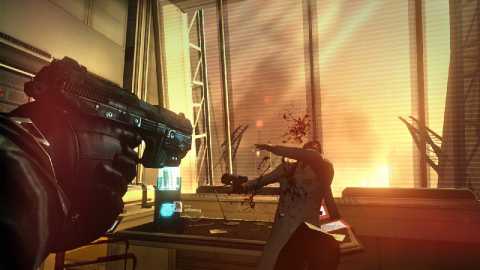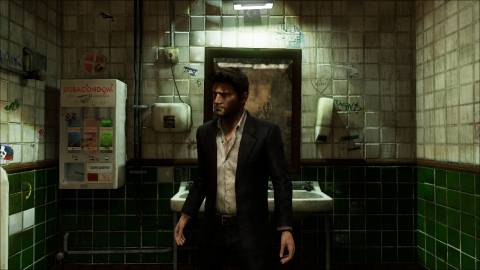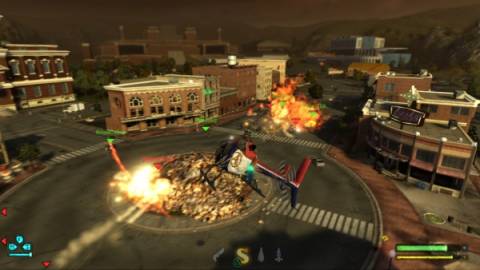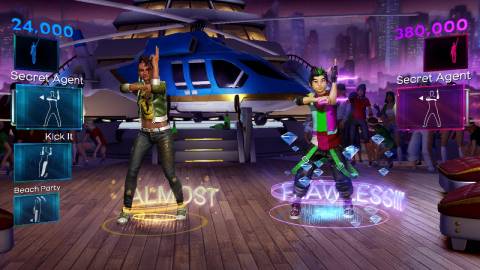Controls schemes in games. The need for complex simplicity.
By xpgamer7 1 Comments
Most games take control schemes for granted. The dual stick shooter, regular shooter controls, in depth fighter controls, light brawler controls, platformers. Everything seems to be copying each other and focusing on the game almost wholly. The originators of these knew that a good control scheme would lead to more players, hell that's why Call of Duty and Halo became the forefront of shooters in the first place. What the gameplay is and how you control it play off each other. I found two games I love in control scheme. I'll talk about Syndicate first.

Syndicate has a pretty simplitic control scheme. It's basic shooter controls. Triggers for aiming and firing, buttons for jumping, getting behind cover, switching guns and reloading. There's also the two cyberpunk power buttons for hacking and DART, but really in this that doesn't matter. The Darkness 2 did the same thing with a near identical controller layout. The amazing thing is the contextualization. I personally think this is the future of controls. We create a vague context for each button and make it do a bunch of things depending on the situation. In Syndicate this means when you're running, some guns can shoot(pistols) and others can't. You can run and slide AND THEN shoot. Do it, it feels amazing. It's this momentum. The duck button suddenly becomes the slide button. The jump button becomes the vault button. The shoot button becomes the shoot while running button. It's not new to games, but when you make these situations work together it feels awesome. Saints Row the Third went somewhat in this direction by changing HOW you did things when holding down the run button. The Darkness 2 changed your aim trigger into a shooting one if you picked up two pistols. I'm hoping to get this same feel in Prey 2 later this year, with it's constant movement and mirror's edge style platforming.

Uncharted(Not the first) has a pretty great control scheme for similar but not completely exact reasons. It throws the buttons around a little with the reload as a trigger, but that's not important. The four face buttons are. They stand for counter, physical attack, defense, jump. Now these sound simple in nature but they're situationally contextual. attacking behind someone is now a sneak attack. Auto jump attacks if you time it right. Pull people off ledges, use enviormental objects, or just get in a fistfight. And that's just the first button. All of them(with counter doing almost nothing contextual other than one purpose) are designed multipurpose under vague context. I feel U3's bar scene did this well, when it felt like a cutscene but you had to actually intereact. And if you didn't do it perfectly it'd still work out as long as you weren't giving up. This extends to the other buttons as well. Jumping becomes climbing, defense becomes rolling, dropping, and taking cover. Uncharted is more contextual to the environmental while Syndicate is more contextual to your actions. Both have aspects of the other, but to different degrees. The best part is that the player will come to expect this contextualization and it becomes intuitive. The vague meaning becomes specific in situations and they understand it. The biggest fault I have against Uncharted is they break this on one account. The defensive button grabs people. Not only does this break the context, it can actually be detrimental if you want to roll away, but keep grabbing an enemy. Especially one of those ungrabbable ones. Even if you're tilting the stick away it won't change. This means that two commands of the button are clashing and it takes away your control. This has killed me many times in the game, but moreso I felt it wasn't my fault for having a tool I needed taken away. But that's my only fault.

Now those were variations on common control schemes. Growth maybe. But what about new schemes? First I'll start with the worst control scheme I've seen. Twisted Metal. Don't get me wrong, I love the series. From Head-On to Black it's great. But the controls are overly complicated and weird. Some of it just doesn't make sense like having a gas button instead of just pressing the stick, while others like rear fire and freeze are just too many things being plugged in. I wouldn't want the game without them but maybe use the right stick as a power wheel and instead of both triggers switching items one could be a wheel opener. Really I'm just saying there's better ways to make a control scheme than everything having a button. Now on new control schemes, I'd have to point out splosion man and Flower. Before you get angry for me only choosing the simple ones I want to put it in context. These games made simple gameplay on simple controls. They went for simplicity over complexity. We can learn complex schemes sure, but just go watch the Xbox indie game QL for games that are WAY too complicated for their own good. These games were designed simply and tried to show how you could have fun with less not more. Really making a new game control scheme is an expansion of this concept of simplicty. You have to make it as user friendly as possible. People can get used to complexity, but a well designed control scheme just makes the game more fun to play and more enjoyable. The best AAA game control schemes are simple in execution but complex in nature. How many new FPS users spend 30 minutes or more staring at the sky or ground? We're used to it, but the multitasking can be hard on some. I think even in this we need to expand our horizons and continue innovating the schemes, rather than copying and pasting the same formulas into new games.

One of the biggest new game control schemes is based on new ways to play. The touch controls of Angry Birds, The motion tracking of Dance Central. Old game archetypes are being used in new ways(Red Steel, Skyward Sword) and new games are popping up on top of that(No more Heroes, JSJ). These games are taking advantage of new tech and using it in the best of their ability to make new experiences, new gameplay, and most importantly (at least with motion control) new ways to play. These games only work because of the tech, and won't be playable otherwise. That doesn't make them bad, just different. And I personally find that difference great. The control schemes are based on the tech we interact with, and although I doubt that wiimotes are the future, I would never argue that games weren't able to make good control schemes with it. And even better, all this motion control can lead to more intuitive gameplay. It's easier to feel more at home playing simon says on Dance Central than Driving a car with an analog stick(regardless of the akward factor). But neither is bad, just a different way to play.
And that's kind of a look behind control schemes. I hope you enjoyed it, and tell me if there's something you think I'm wrong on.

1 Comments